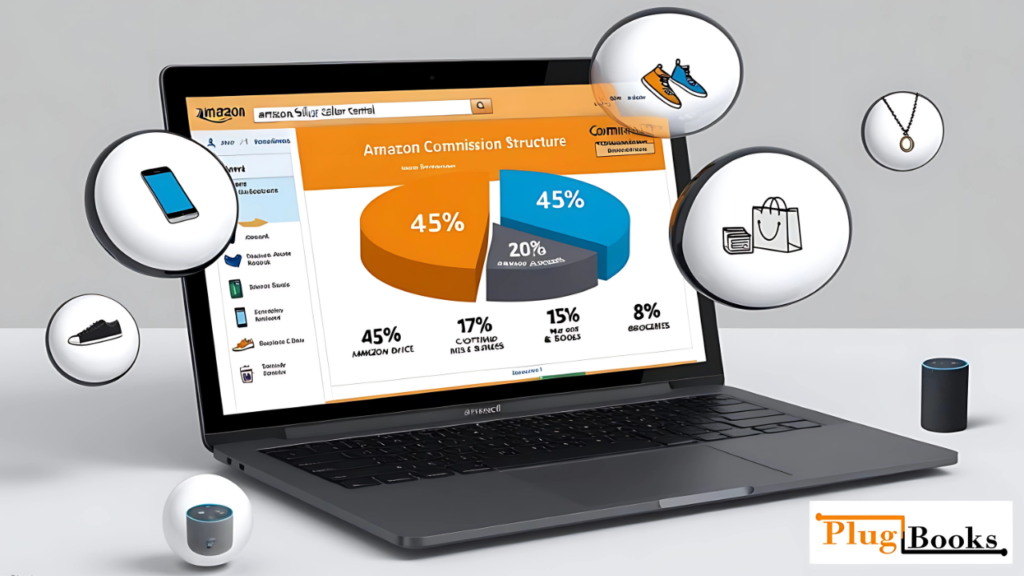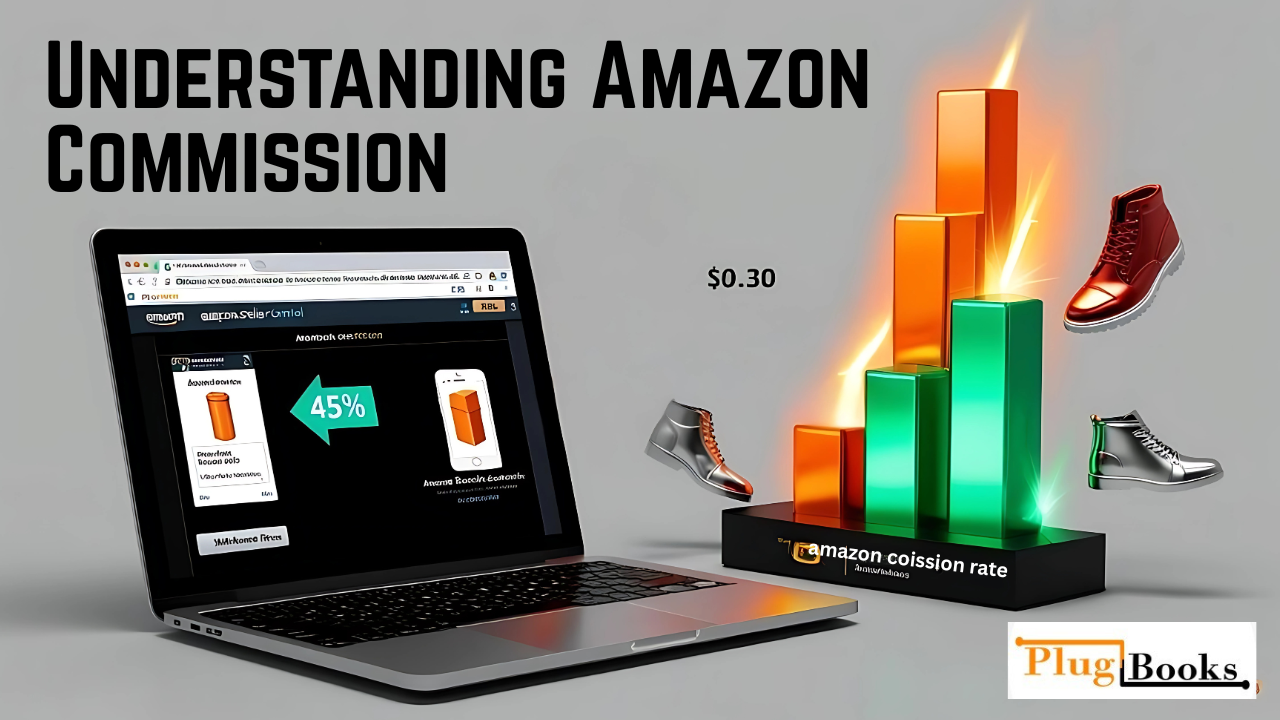If you’re planning to sell or already selling online, understanding Amazon commission is absolutely essential. It’s not only a little cost; it’s a big determinant of your margins, profitability, and pricing. Knowing how much commission Amazon collects and what the most recent changes are to how commission on Amazon operates will help you either as a novice or seasoned seller decide how best to run your business.
Let’s go over in great depth how Amazon fees operate and how you could maximize them to expand your company and increase income.
Keynotes
- Amazon commission rates vary greatly between product categories.
- Usually there is a $0.30 minimum referral fee per item.
- Knowing how much commission Amazon takes is therefore very important for correct pricing
- Some categories, like Amazon device accessories, have commissions as high as 45%.
- Strategic selling can reduce the impact of commission on Amazon fees.
What is the Amazon Commission?
Simply said, commission on Amazon is the cost Amazon charges vendors for every sale that passes through. The fee covers the cost of the item, delivery, and any gift wrapping expenses; it is a fraction of the overall sales price.
Paying the commission on Amazon gives sellers access to:
- Paying the Amazon commission lets consumers:
- Amazon boasts an enormous clientele.
- Trust and belief in you by buyers
- Prime shipping benefits should you use FBA
- Easy methods to check out
- Thorough policies safeguarding vendors
Therefore, when you pay for a post, you are really purchasing a marketplace already filled with eager buyers.
How Much Commission Does Amazon Take?
The big question for every seller is: how much commission does Amazon take?
The answer depends mainly on your product category.
Here’s a closer look:
| Category | Commission Rate |
| Amazon Device Accessories | 45% |
| Jewelry | 20% for the first $250, then 5% afterwards |
| Beauty Products | 8% if price <$10, 15% if price >$10 |
| Clothing, Shoes & Handbags | 17% |
| Furniture | 15% for the first $200, then 10% afterwards |
| Grocery Items | 8% if under $15, 15% if over $15 |
| Books, Music, DVDs, Software | 15% |
| Electronics Accessories | 15% |
- Most categories call for commissions between 8% and 20%.
- Some categories, like Amazon Device Accessories, have exceptionally large commissions—up to 45%.
Moreover, regardless of the selling price of the goods, a minimum referral fee of roughly $0.30 per item is normally paid.
Check Amazon’s revised charge schedules depending on the exact category of your item to help you determine how much commission it absorbs for your particular item.

Commission Amazon: Other Important Fees Sellers Should Know
Besides the regular commission on Amazon charges, sellers should also account for:
- FBA Fees (Fulfillment by Amazon): Amazon’s fulfilment satisfies: Store, choose, pack, and ship separate charges for each.
- Subscription Fees: For a Professional Seller account (optional for Individual Sellers), subscription fees run $39.99 per month.
- Closing Fees: Closing fees for media including Books, Music, Video, and DVD.
Although commission on Amazon fees play a role, the overall cost to sale may also include these service fees. Smart sellers make forward plans and incorporate all this into their price strategies.
Real Examples: How Amazon Commission Impacts Pricing
Let’s see an example:
- Assume you are selling $100 worth of shoes.
- For Clothing and Shoes, the referral fee is 17%.
- $17 is Amazon’s commission.
- Using FBA will also cost storage and fulfilment (e.g., $4–$8).
You can find even smaller margins than planned if you fail to fairly account for these expenses.
Understanding how much commission does Amazon take empowers you to price your products strategically.
Commission Amazon Compared to Other Marketplaces
Is commission higher compared to competitors? Here’s a comparison:
| Platform | Typical Commission Range |
| Amazon | 8% – 45% |
| eBay | 12.9% + $0.30 fee |
| Etsy | 6.5% + listing fees |
| Walmart | 8% – 15% |
While commission on Amazon in some areas may seem larger, visitor volume and customer confidence Amazon generates usually result in considerably higher total sales. For this reason, despite the expenses, many vendors still rely mostly on Amazon.
How to Minimize Amazon Commission Impact
If you’re serious about increasing profitability, here’s how you can reduce the effect of Amazon commission:
- Price smart: Start your product pricing from the commission and factor it.
- Bundle products: Higher ticket bundles help to reduce per- piece commission.
- Choose lower-commission categories: If at all possible, sell in groups with commissions around 8%.
- Use FBA carefully: Although it costs extra, it can boost sales, therefore offsetting the expenses.
- Monitor sales: Amazon updates policies often. Bookmark this blog or check Plugbooks.io for the latest amazon commission rates updates.
- Use Tools to Calculate Profit:Use accounting and sales software like Plugbooks.io to predict fees and true net profit accurately.
Staying mindful of how much commission does Amazon take helps you stay agile and profitable.

How Plugbooks Helps You Manage Amazon Fees
Plugbooks is an invaluable tool for Amazon sellers who want to effectively manage their finances and stay on top of Amazon’s commission rates. With the complexities of various fees like referral and fulfillment costs, Plugbooks helps you easily track and organize all charges associated with your Amazon sales.
Moreover, Plugbooks offers a seamless integration with QuickBooks, simplifying your accounting process. By syncing your Amazon sales data with QuickBooks, Plugbooks ensures your financial records are up to date and accurate without any manual effort. This integration saves you time and reduces errors, so you can focus on scaling your Amazon business.
Final Thoughts
Running a thriving Amazon company depends on your being able to grasp Amazon commission. Knowing the amount of commission on Amazon takes and the way commission fees are broken will help you better manage your margins, plan your product prices, and prevent unanticipated losses.
Although expenses could sound intimidating, the possible benefits of more sales, strong brand awareness, and access to Amazon’s huge market are well worth it. Keep educated, make wise plans, and you will discover that paying the commission on Amazon is a modest cost for great results.

Disclaimer
This blog serves purely informational needs. Based on publicly accessible information from Amazon’s seller resources, the specifics of commission on Amazon, commission amount, and commission on Amazon takes have been obtained.



